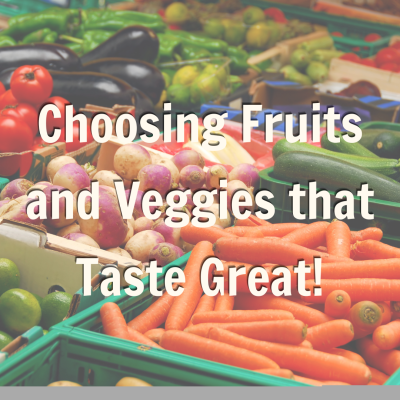
There’s no time like spring! With longer days and warmer weather, many of our favorite fruits and vegetables are coming into season. To get the most out of your produce, select items that are fresh, high quality and most importantly, delicious! Read on for tips to select produce year round.
Selecting Fresh, High Quality Produce
When at the store or farmers market, you might wonder how to select different fruits and vegetables. Here are some general tips to consider:
Look at the produce. Check if the skin is intact and free from holes. Notice the texture – is it appropriately smooth or wrinkly for that fruit or vegetable? Is it discolored?
Feel the produce. Produce should be firm or slightly soft when at peak ripeness, depending on the fruit or vegetable being selected. Avoid produce that is soft and mushy. Also avoid packaged items with excess moisture, which can lead to faster spoilage.
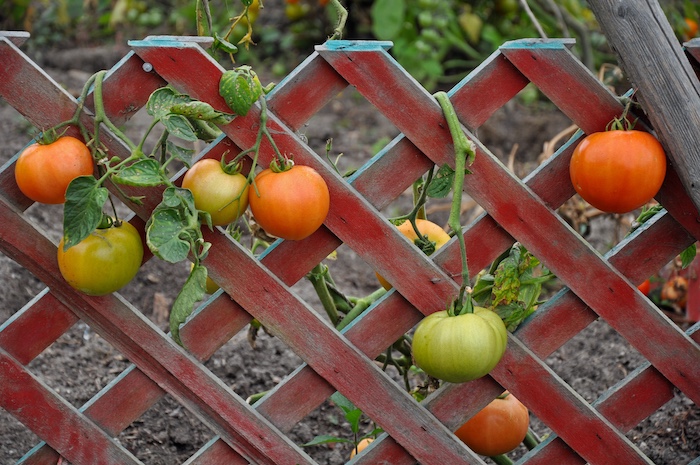
Smell the produce. Ripe produce should smell fresh and may have a strong, sweet scent. It should be eaten soon after purchase. A weaker scent typically indicates the produce isn’t ripe yet and should be stored for a few days before eating. Avoid anything that smells moldy, sour or off.
Consider whether or not a particular fruit or vegetable ripens after picking. For example, blueberries do not ripen after they are picked, whereas pears continue to sweeten and soften after picking. Check out the list below for fruits that continue to ripen after picking and fruits that do not:
Fruits that continue to ripen after picking:
- Apricots
- Bananas
- Kiwi
- Mango
- Nectarines
- Peaches
- Pears
- Plantains
- Plums
Fruits that should be purchased ripe:
- Apples
- Cherries
- Grapefruit
- Grapes
- Oranges
- Pineapple
- Strawberries
- Tangerines
- Watermelon
Note: Store-bought produce is usually uniform looking, whereas produce at farmers markets might look more varied. This does not mean the produce is bad! If you have questions on specific produce, ask the farmer or market staff.
Saving on Produce Year Round
Buying produce in season is the best way to get fresh produce for the lowest cost. For a guide on what is in season in Oregon, check out this resource on Seasonal Fruits and Vegetables.
If a fruit or vegetable is not in season, try enjoying it in another form. Frozen or canned produce may cost less, and it’s picked and packaged at peak ripeness!
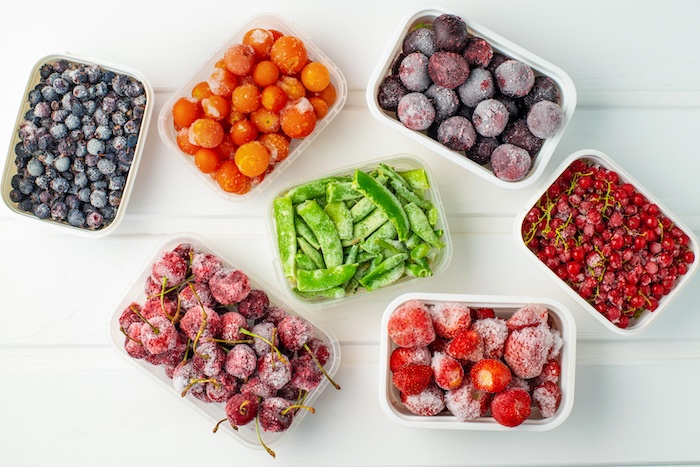
Storing Produce
After purchasing produce, follow these tips for fresher, longer storage:
- To slow spoilage, wait to rinse produce until you are ready to use them. Rinsing before storage promotes bacterial growth and faster spoilage. If you do need to store fruits or vegetables after you’ve rinsed them, wrap them loosely with a clean towel to absorb moisture. For information on how to rinse produce, check out this blog.
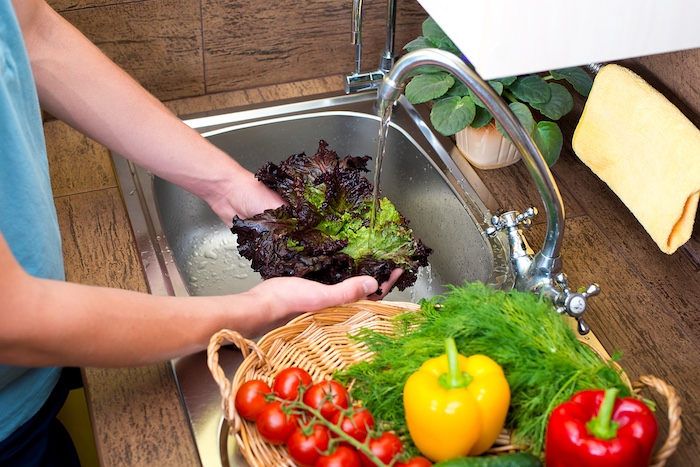
- To save cut vegetables, store them in a container in the fridge to prolong freshness.
- Know where to store vegetables and fruits. Here is a list of where produce should be stored:
- Fridge:
- Apples, berries, oranges, lemons, limes, grapefruits
- Beets, carrots, parsnips, turnips
- When ripe: avocados, kiwi, mangoes, pears
- Counter:
- Bananas (store separately from other produce as they can ripen other fruits)
- Tomatoes
- To ripen: avocados, kiwi, mangoes, pears
- Cool and dry spaces (pantry):
- Garlic, onions, potatoes (must be stored in the dark), winter squash
- Fridge:
- Many types of produce are only in season during certain times of year. Learning how to freeze fruits and vegetables can help you enjoy them year round. We have resources for Freezing Fruit and Freezing Vegetables.
For recommendations on selecting, storing and enjoying specific fruits and vegetables, check out our Food Hero Monthly magazines, which feature a new ingredient each month.
Using Fruits and Vegetables Before they Spoil
Even when you store fruits and vegetables carefully, you may still end up with some that become overripe. Brown bananas and overripe pears may not be as tasty to eat fresh, but you can still use them before they spoil. Fruits that are past their peak ripeness are often sweeter. Freeze bananas with brown spots for smoothies or bake them into recipes like Banana Oatmeal Muffins. Add overripe pears to Pear and Cranberry Crisp.
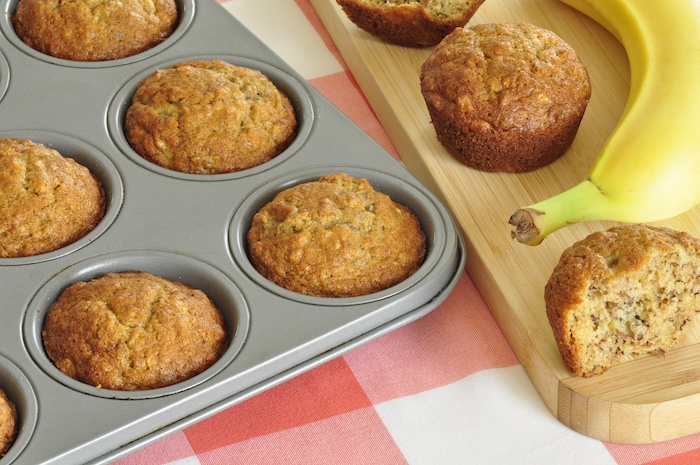
Vegetables like greens, broccoli, and carrots may become wilted or limp after longer storage in the fridge. Before they show signs of spoiling, add them to your favorite soup or roast them.
We hope these tips will help you find tasty, affordable produce year round. Let us know what tips you will be trying this season!




